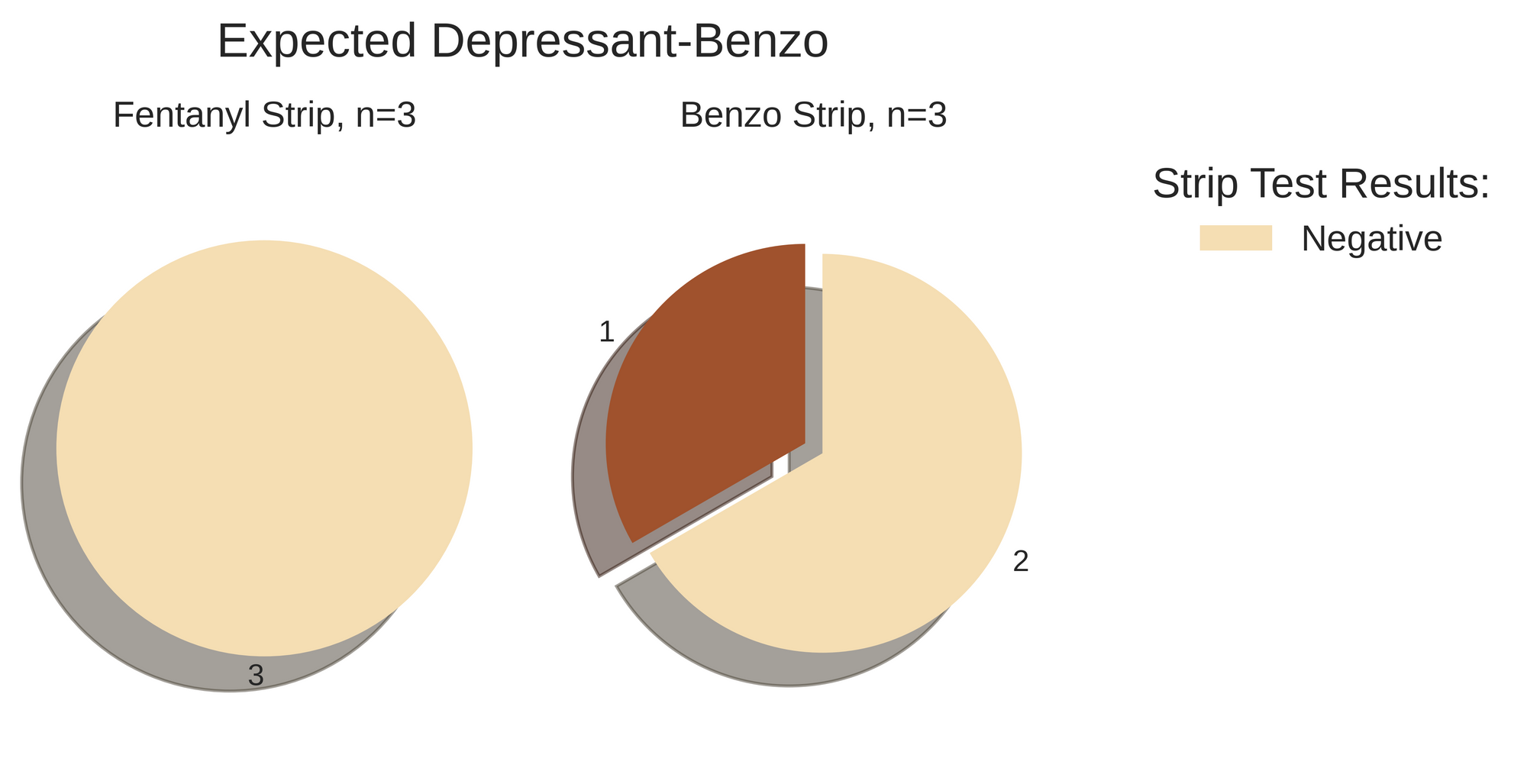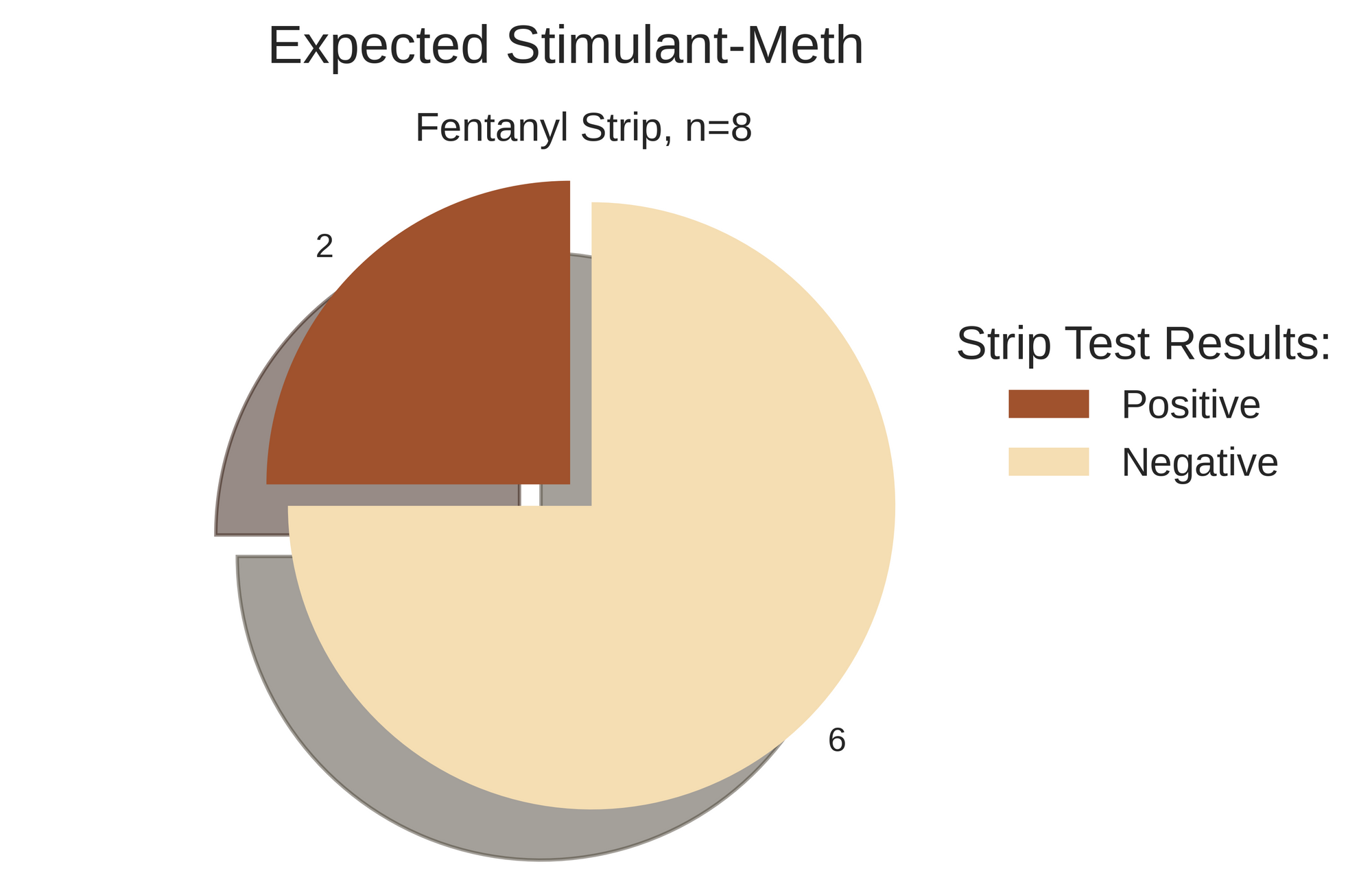November 2020 Monthly Report

In this blog post we discuss our November 2020 report and provide more information on how to interpret the results. We are also excited to announce our collaboration with Vancouver Island University and their paper spray mass spectrometer. The PDF report can be found at the end.
Key findings:
- 20% of expected opioid-down samples contained etizolam (benzodiazepine-related).
- No expected opioid-down samples tested positive using benzodiazepine strips
- No expected benzodiazepine samples (Xanax, n=3) contained their expected active (alprazolam)
- Novel finding of flubromazolam, a designer benzodiazepine, which is more potent and has a longer half-life than alprazolam.
Insight for the November 2020 Monthly Report

In November we checked 99 samples. This has decreased from the 138 checked in October, which can be correlated to seasonal changes as well as the heightened lockdown restrictions. In comparison to the November 2019 data (53 samples), this month showed a 87% increase, demonstrating the continued relevance of our service despite the winter season.
VIU Collaboration: Paper Spray Mass Spectrometry (PS-MS) for Rapid Drug Checking
We are excited to announce our new collaboration with Vancouver Island University (VIU) who will be offering further analysis of the samples collected at our service. Through this collaboration, we hope to increase the accuracy and reach of our drug checking results and provide more information about what is circulating in the illicit supply in Victoria, BC.
The team at VIU has been developing Paper Spray Mass Spectrometry (PS-MS) as a valuable lab-based and on-site drug-checking technology. Current team members include professor Chris Gill, Scott Borden (Ph.D. Candidate) and Armin Saatchi (B.Sc., Research Affiliate). PS-MS is quick, simple, specific, sensitive and easy to use. Accurate tests require very small drug samples, providing direct measurements for trace and major drug components. In addition, it can easily confirm the identities of new drugs as they appear in samples. Further details have been published in literature.
Why another instrument? Each technique has strengths and limitations. For example, our FTIR identifies bulk components well but struggles to detect low-level actives. For this reason we screen our samples using fentanyl test strips due to their high sensitivity; however, these strips offer no information towards quantification. The PS-MS technique is able to detect and quantify low-level actives, so the use of complementary technologies provides us with a better picture of what is in a drug sample. Our VIU partners analyzed our November samples and helped detect etizolam in five samples expected to be opioid-down where etizolam was not originally identified by our FTIR. Additionally, the team at VIU identified the designer benzodiazepine, flubromazolam, in an expected Xanax tablet.
EXPECTED OPIOID-DOWN

In November, no expected opioid-down samples tested positive using the benzodiazepine test strips; however, nine samples were found to contain etizolam, a benzo-related compound that magnifies the depressant effects of opioids and to which Naloxone is unresponsive. Due to etizolam’s structure, it does not react with benzodiazepine strips and therefore cannot be identified using benzodiazepine test strips alone. This speaks to the importance of comprehensive drug checking that uses a variety of technologies to provide a clearer picture of substance composition.
EXPECTED BENZODIAZEPINE

We continue to see notable misrepresentation of Xanax samples. Three samples expected to be a benzodiazepine were checked this month. Specifically, all three were expected to be Xanax, of which the main active is alprazolam. Instead we found: (1) a positive strip test and novel finding of Flubromazolam by PS-MS, (2) a negative strip test and finding of etizolam, and (3) a negative strip test and no active component identified. The benzo strips are highly specific to alprazolam, and knowing the one positive result was due to flubromazolam, we can report that all three samples did not contain the expected active of alprazolam.
Flubromazolam, is a designer benzodiazepine, meaning it has never been subject to a clinical trial or registered for therapeutic use. It is more potent and has a longer half-life relative to alprazolam (the active in Xanax). Read more here.
EXPECTED METHAMPHETAMINE

We checked eight samples expected to be methamphetamine. Two of these samples were found to be “down” samples containing fentanyl and with no methamphetamine present. In both these cases, the samples were brought in by third party testers -not the user themselves- so there is the likely potential of miscommunicated expected components. The other six samples were found to only contain methamphetamine with no adulterants or cuts detected.
The unique circumstances of individual drug checks help provide nuanced understandings of the supply which can be difficult to present using data alone. We continue to create these blog posts to provide valuable context to our results. As always, we welcome your thoughts on how we can continue to offer our drug checking results in useful ways.
Have any feedback about these reports? Anything in addition you want to hear about? Let us know at substance@uvic.ca.
Merry Christmas everyone! Check back next month for the December results.
